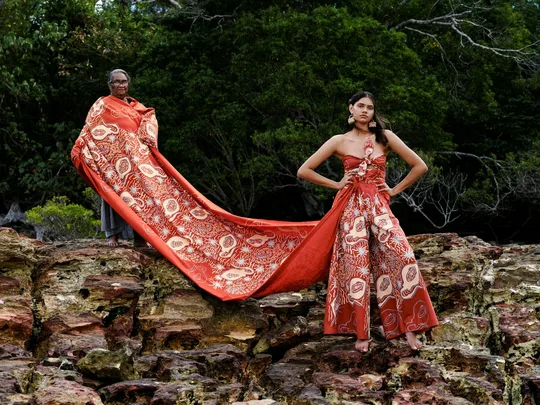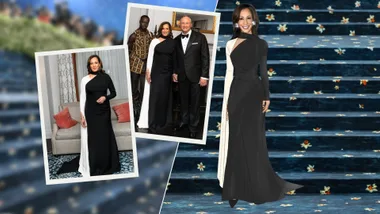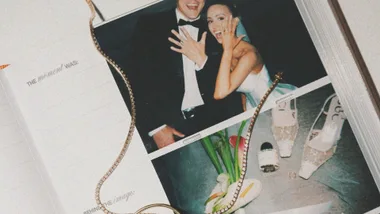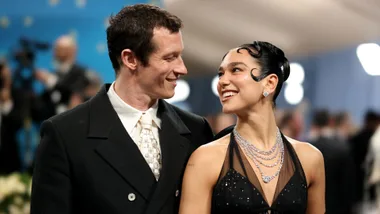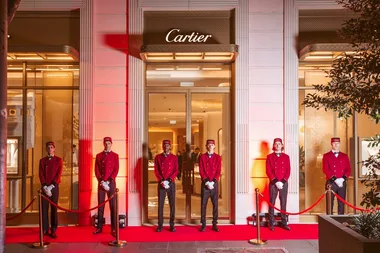For the past three years, the National Indigenous Fashion Awards have recognised the extraordinary talent and creativity within the First Nations fashion industry. The awards span across six categories, including community collaboration, textiles, business achievement, wearable art, traditional adornment, and fashion design.
We joined forces with the NIFA to celebrate this year talented line up of winners with a special shoot shot on Larrakia Country. Keep scrolling for more on the winners.
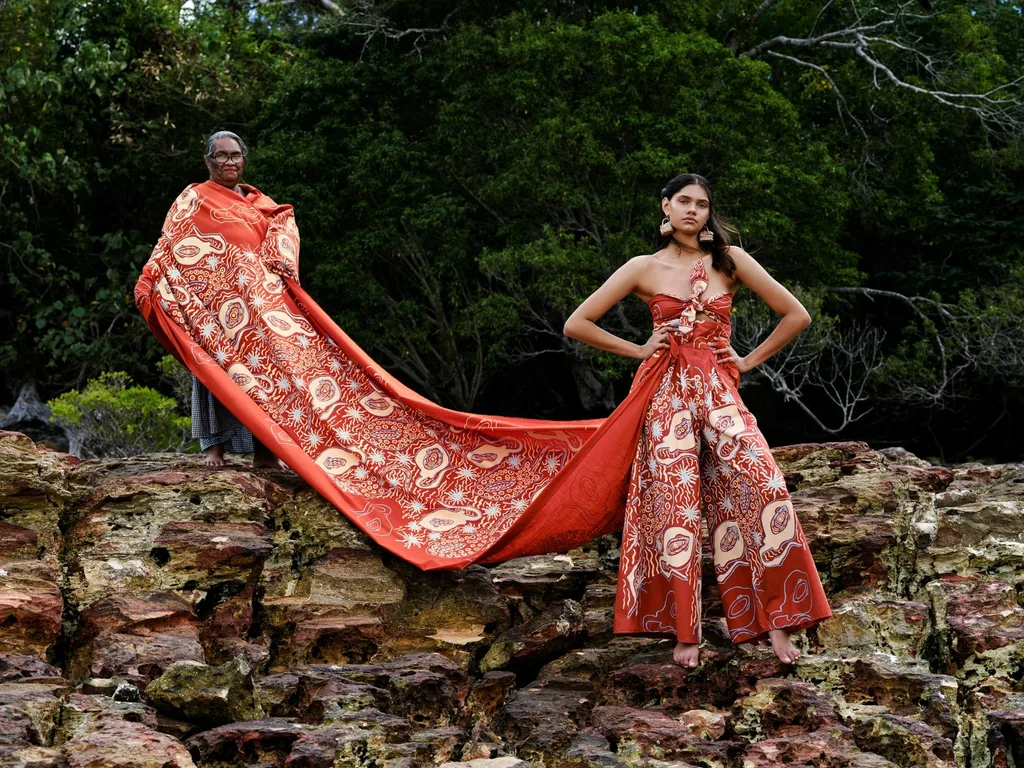
Philomena Yeatman
Textile Design Award
Yarrabah Arts and Cultural Precinct
Gunggandji woman Philomena Yeatman (far left) is standing on the rocks of Darwin’s East Point Reserve on Larrakia Country. She’s looking at her niece Charvarnie, who is modelling a jumpsuit made from the fabric Philomena designed and printed.
The fabric tells the story of the yulu (stingray). The yellow represents the beach flowers that bloom at the start of stingray season, the brown is the land and the blue is the sea. “The beach hibiscus is like a calendar, it tells us when the stingrays are around. When I was a kid, we would go to the beach to catch stingray on the weekends,” says Philomena as a white-breasted sea eagle flies overhead. “That’s my totem,” she adds, looking up to the sky.
With it, Philomena’s totem brings good news: she’s won the Textile Design Award at the National Indigenous Fashion Awards (NIFA). The award recognises Philomena’s masterful textile work, her compelling story-telling and her extraordinary talent.
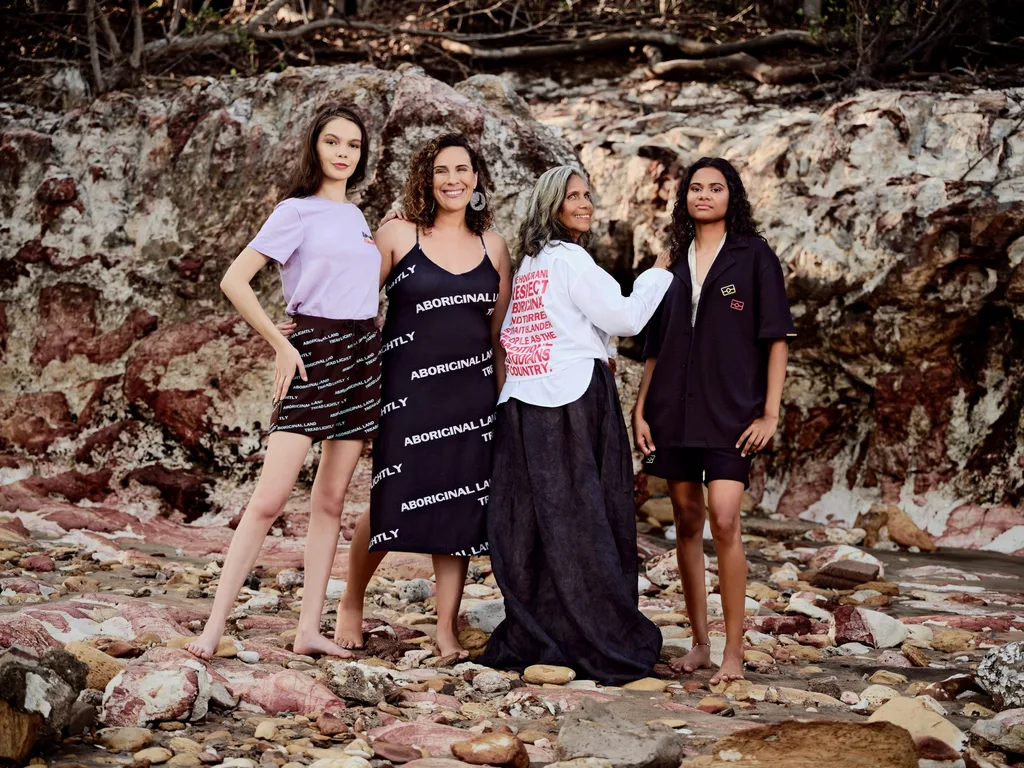
Laura Thompson
Business Achievement Award
Clothing the Gaps
When Gunditjmara woman Laura Thompson was growing up, she didn’t know any business owners. Today, all the kids in her community know her: an award-winning, game-changing businesswoman. “I used to think businesspeople were white men in suits. The idea that one day I could run a business wasn’t even in the realm of possibility,” says Laura.
Now here she is, doing just that: empowering mob through her business, Clothing The Gaps (CTG). Since launching in 2018, the fashion label has grown to employ 32 First Nations people. CTG’s latest collection, named Honouring Country, aims to encourage people to learn more about the Traditional Owners of the land we’re on and to connect with Country. It includes “ally-friendly” pieces and “mob-only” designs. GTG was also recently certified B Corp. “We prioritise Country, culture and community,” says Laura, and “the B-Corp values of sustainability and doing good are the same values at the forefront of Aboriginal business.”
What does an industry-leading, internationally recognised, powerhouse businessperson look like? Laura.
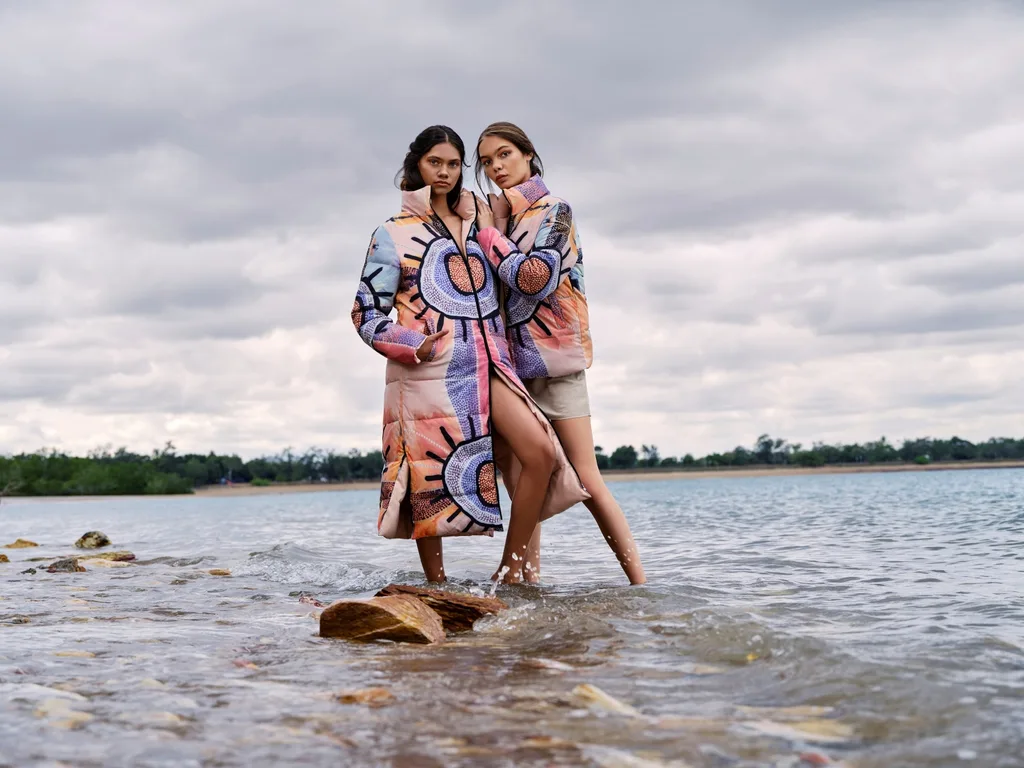
Mimili Maku Arts
Community Collaboration Award
Linda Puna x Unreal Fur
Linda Puna has powerful hands. These hands make bold brush strokes in her paintings, they direct fashion brand campaign shoots, and they control her electric wheelchair. “With these hands, I work hard,” says Linda, a Yankunytjatjara artist from the remote community of Mimili on the An – angu Pitjantjatjara Yankunytjatjara (APY) Lands.
Indeed, Linda has been hard at work collaborating with the Melbourne-based fashion label Unreal Fur on a capsule collection of outerwear. Not only did she paint the artwork featured on the fabric prints, she also contributed to every element of the collection, from the swing tags to the final designs, and directed a fashion shoot on Country with the young people in her community. “We wanted Linda to communicate her story her way, so we worked closely with her, the elders in the community and Mimili Maku Arts,” says Gilat Shani, the creative director of Unreal Fur.
The resulting collection is coveted by the style set, and won the NIFA Community Collaboration Award.

Denni Francisco
Fashion Designer Award
Ngali
In a number of Aboriginal languages, ngali translates to “we” or “us”, and it’s this sense of community that inspires Wiradjuri designer Denni Francisco. “Our business ethos is ‘Together We Create’ and that togetherness is the most important thing to me,” explains the Ngali founder, who launched her label in 2018 and has taken out the NIFA Fashion Designer Award two years running.
The introduction of the NIFA, she says, is testament to the creativity within the First Nations fashion space, and the mounting attention it’s gathering. “There’s a special energy that is created when communities come together.
[First Nations fashion] goes beyond business, it’s a celebration of our culture and recognition of the creative talent and our collaborations,” says Denni of the unique connectivity in the industry. “This collection is called Ngali Miya and miya translates to ‘together’ in Wiradjuri language. The designs include both Aboriginal prints and solid colour shirts and dresses inspired by the beautiful shades of our Country,” she explains of her award-winning work.
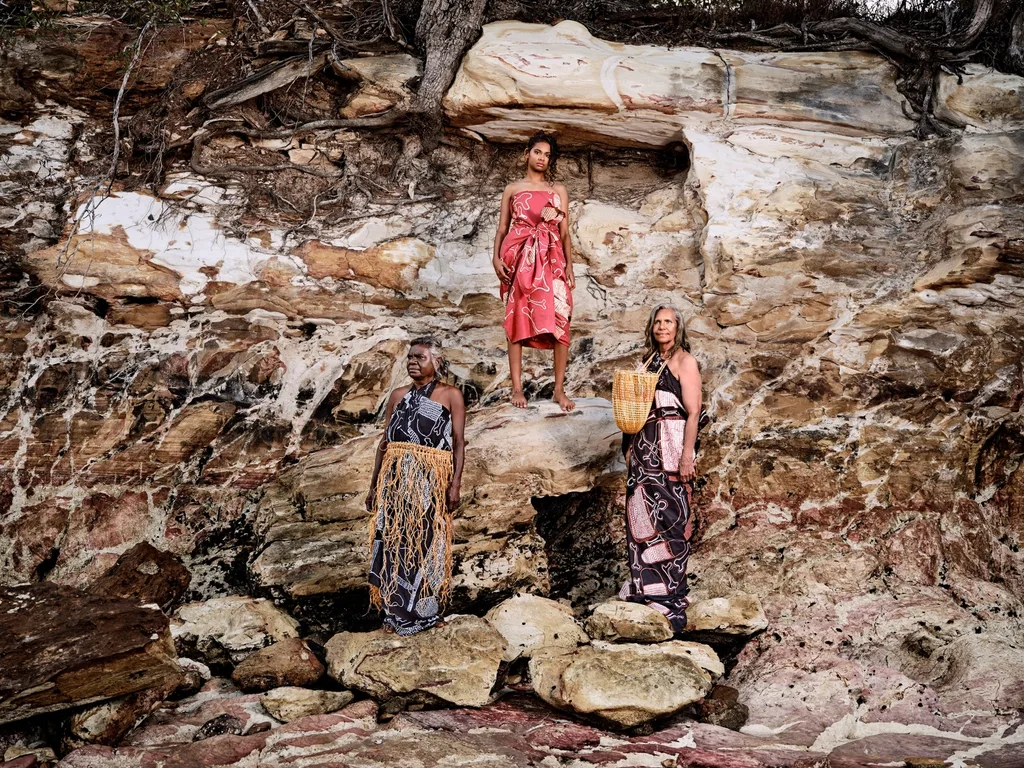
Esther Yarllarlla
Traditional Adornment Award
Bábbarra Women’s Centre
Esther lives at the beach. She remembers growing up here when her family didn’t have knives, so they used kangaroo back for cutting. They didn’t have ovens, so they cooked over fire. They didn’t have clothes, so they wove traditional pieces, including the mókko, a bark skirt made for women as daywear (with an opening at the back).
It’s this mókko that has won Esther the NIFA. It’s this mókko that tells the story of her past. And it’s this mókko that has made her a bona-fide star in her community. “My grandkids call me a fashion queen,” says the Kunibidji woman, looking the part draped in fabrics printed with her design of mardarda and njarlarla (bones and
fire sticks).
This story originally appeared in the November issue of marie claire Australia.
